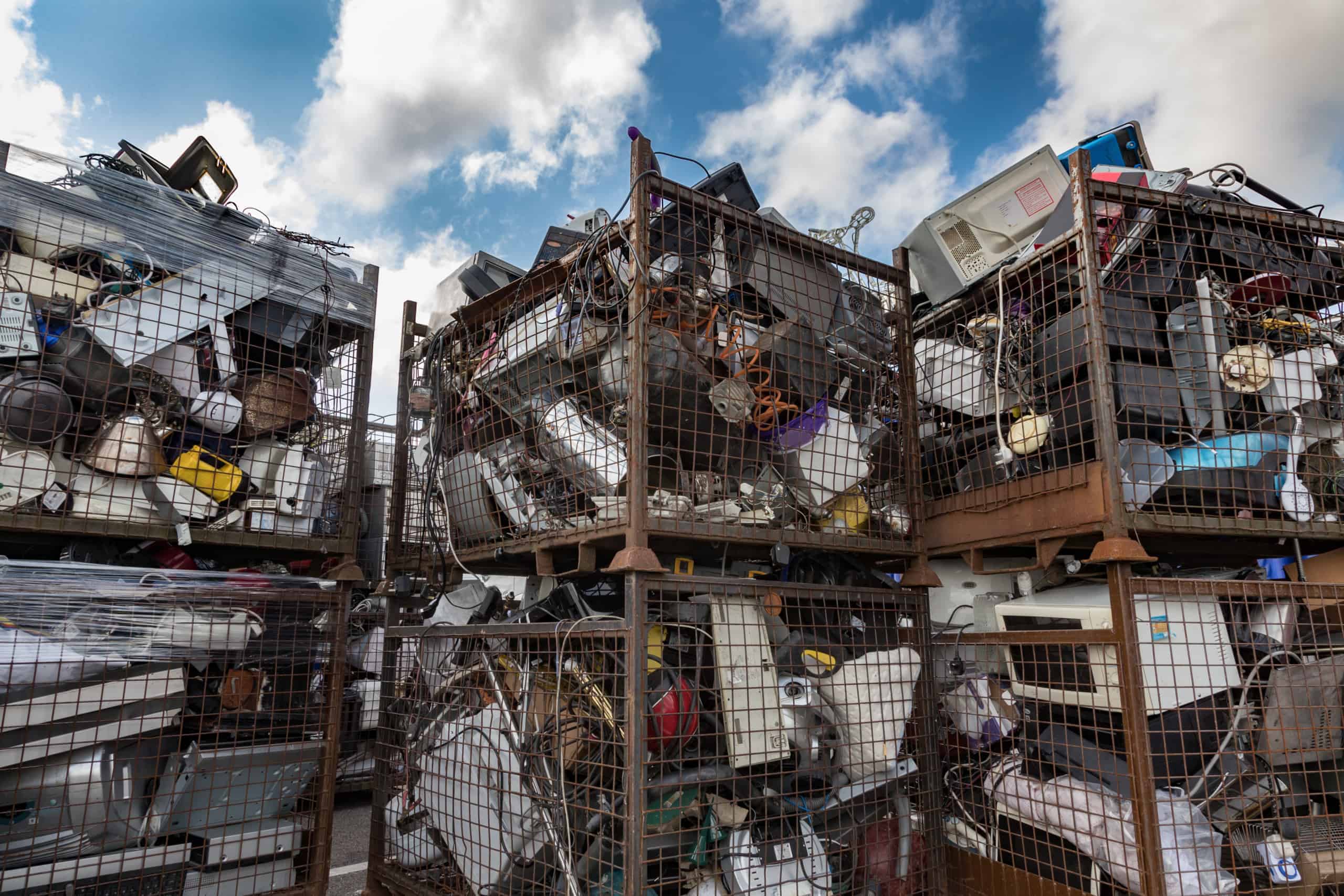It is no secret that the world loves its electronics, but that love is fleeting, and e-waste is quickly becoming a problem of epic proportions. Every year, the world produces between 20 and 50 million metric tons of e-waste. Due to an increase in electronic production and shorter product lifespans, the National Institutes of Health expects electronic waste to increase.
Amidst the mounting concerns surrounding e-waste, junk pickup services emerge as a proactive solution to address the growing problem. By entrusting the disposal of electronic waste to experienced professionals, individuals can contribute to sustainability efforts while minimizing the environmental impact of outdated electronics. With the convenience and reliability of junk removal services, communities can take proactive steps towards mitigating the consequences of e-waste accumulation, paving the way for a more sustainable future.
What is e-waste?
Electronic waste, or e-waste, is all of the electronic devices and accessories that people discard when they are no longer useful. The most common types of e-waste include:
- Computers
- Printers
- Tablets
- Phones and other communication devices
- Video games
- Videocassette and DVD players
The thought that humankind stacks all of the world’s used cell phones, game controllers, and other devices in a vast heap is almost incomprehensible. The scale of it is just immense. When people throw most things away, we typically deem the items in question as broken or unusable.
Electronics are different.
The world of electronics is exceptionally dynamic. Indeed electronics companies are always working on the next big thing. Many products are practically obsolete the moment they leave the shelf, and this results in people throwing away perfectly viable devices. This consumerism is the main reason that e-waste is increasing globally.
Hazards of e-waste in landfills
The waste from used electronics presents several risks; it affects workers, the world economy, and the planet at large. The current handling of used electronics poses dire threats to the quality of life and resource sustainability.
Irresponsible disposal of e-waste
Unfortunately, most of the world’s e-waste is recycled only in the crudest sense. After reaching landfills, most of the world’s e-waste is loaded into shipping containers and sent to countries like China, India, and Nigeria.
Once it arrives, the e-waste undergoes a battery of hazardous recycling methods.
The Basel Action Network (BAN) is tasked with monitoring the world’s e-waste. BAN’s Executive Director, Jim Puckett, referred to the recycling of e-waste in China as a “cyber-age nightmare.” He also stated that workers are regularly exposed to dangerous fumes from the heating tin, lead, and flame retardants.
E-waste recycling in India is no better. A writer for the National Institutes of Health called the country’s recycling sector “medieval.” The toxic components of many electronics make their disposal problematic for developed and developing countries alike.
Ideally, recyclers should break electronics down, isolate all useful materials, and extract them separately. “That’s how it’s done when you don’t dump it offshore,” Puckett said. Presently, though, Puckett compared current practices to people “cooking printed circuit boards.” Without using mechanical shredding and high-tech separation techniques, the pollution caused by merely melting down electronics is extreme.
Pollution caused by e-waste take a toll on human health
The gradual impact of pollution can make it easy to ignore, but it is one of the biggest threats to the modern way of life. Indeed, pollution connects to all sorts of nasty things. Recently, scientists linked pollution, including pollution caused by e-waste, to health problems such as:
- Bipolar disorder
- Fatigue
- Depression
- Mood shifts
- Changes in appetite
- Trouble focusing
- Manic episodes
In addition to physical health problems, scientists speculate that pollution from electronic waste affects human intelligence. Researchers also claim that exposure to outdoor pollutants contributes to approximately 4 million deaths every year. Clearly, this is a trend the world should focus on changing.
 The squandering factor
The squandering factor
As though impending doom is not reason enough, the current handling of valuable materials in electronics is shamefully wasteful. Some of the materials people are wasting en masse are those of the future. Lithium, for example, might soon assume a huge role in energy soon. But we often overlook it, discarding it instead.
Lithium could also play a key role in staving off climate change, and even President Trump admitted it was “vital to our national and economic security.” It is essential to understand that lithium, even if currently plentiful, is a finite resource. It takes millions of years to form, and we cannot renew it one we use it.
Most people probably know that lithium-ion (Li-ion) batteries are everywhere these days, but the sheer numbers would surprise them. In 2020, China is expected to produce 500,000 metric tons of e-waste in Li-ion cells alone. That equates to about 1 billion pounds. Analysts predict that by 2030, China’s used Li-ion batteries will increase by 400%.
Electric vehicles quickly crowd the landfills and scrap yards around the world. As such, scientists estimate that the world’s demand for lithium, so much of which is already lying in landfills, will increase by 300% in the next decade.
Obstacles to responsible e-waste management
1 – The not-so-small matter of cost
Cost is the biggest hurdle when it comes to responsible recycling of e-waste. The countries that import electronic waste for recycling are primarily absent from regulations on recycling methods or worker safety. The obvious consequence is the cheapest possible means of extracting metals.
Nothing drives up the cost of business like responsibility.
2 – Recycling is the password
It is true, as Puckett quipped, that recycling is more of a password than a practice. There are no laws in the United States, for example, that forbids a citizen from shipping e-waste abroad for unregulated recycling. Thus, the United States government takes no active role in the safe disposal of e-waste.
The lack of incentive to deal with e-waste responsibly makes environmentally friendly recyclers a rare breed. According to Puckett, there are “about half a dozen” environmentally responsible smelters and plenty of irresponsible ones. Even consumers who think they are doing the right thing are likely just contributing to a cargo container headed overseas.
3 – The throwaway mentality
It is tough for most consumers to be sure that landfills are dealing with their e-waste properly. One of the best ways consumers can contribute is by holding on to electronics as long as they can. We can take action to extend the life of most electronic devices.
One person’s garbage indeed is another’s nostalgia. In fact, some outdated electronics carry quite a bit of value. Used Super Nintendos, plenty of which found their way into landfills, can net even an impatient seller $50 apiece.
A lot of people these days seem to have an aversion to the concept of repair. People often spend up to $1,000, replacing a phone instead of $100 to fix the screen. If people can stretch their electronics for another year or find them another owner, they can help dramatically reduce annual e-waste.
Recycling e-waste responsibly
Although it can be challenging to make sure electronics are recycled responsibly, we can do it! Before resorting to the landfill, consumers have several options.
1 – Company buy-back programs
A lot of companies offer their customers incentives to bring in their used devices, and they seem to help. As part of Apple’s GiveBack program, customers can earn up to $1,000 by trading in qualifying devices. Apple will also recycle non-qualifying devices free of charge.
Other companies, like Best Buy and Sprint, also have programs for turning in old devices, and there is a good reason for that: It can be extremely lucrative. Apple reported salvaging an astonishing 2,000 pounds of gold (worth $40 million) from used devices in 2015.
2 – Local e-waste recycling programs
A lot of cities and towns sponsor collection days for citizens to drop off electronics. Most used electronics do not take up too much space, so people should be able to hang onto them until collection day. A good time to recycle electronics in many communities is around Earth Day.
3 – Donations
On any day in just about any town, there is a non-profit organization that will happily take electronics off people’s hands. Yes, they may end up in a landfill anyway, but they may find a new home.
 Final thoughts on avoiding tossing your e-waste into the landfills
Final thoughts on avoiding tossing your e-waste into the landfills
From a consumer standpoint, it is irrational to trust landfills with the disposal of electronics; there is simply no financial motivation for them to recycle e-waste responsibly. Improved regulatory efforts by states and the federal government may be coming, but for now, the responsibility belongs to everyone.
Many of the electronics that end up in landfills are in excellent working condition and would probably even fetch a profit. People can return their electronics to companies for credit, sell them privately, or just donate them so that someone else can enjoy them. The landfill should be everyone’s last resort.
The environmental sins of the past are starting to rear their ugly heads, but it is not too late to fight back. There have been hugely successful conservation efforts around the world, which means that the damage caused by e-waste is reversible. It is tempting to throw electronics into landfills or replace them unnecessarily, but people can and should avoid it.


















